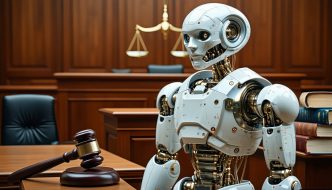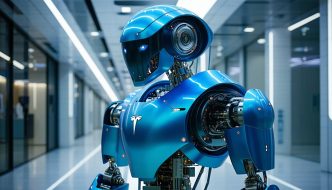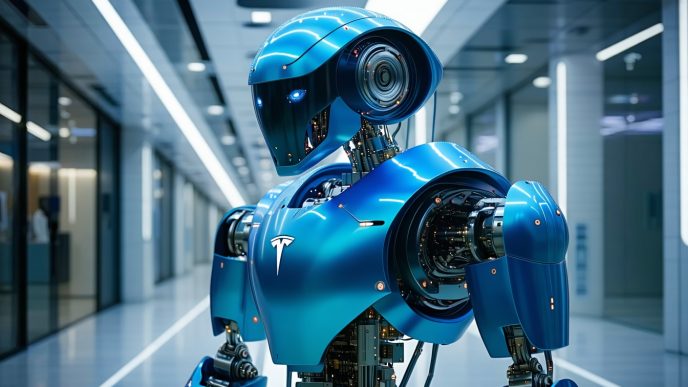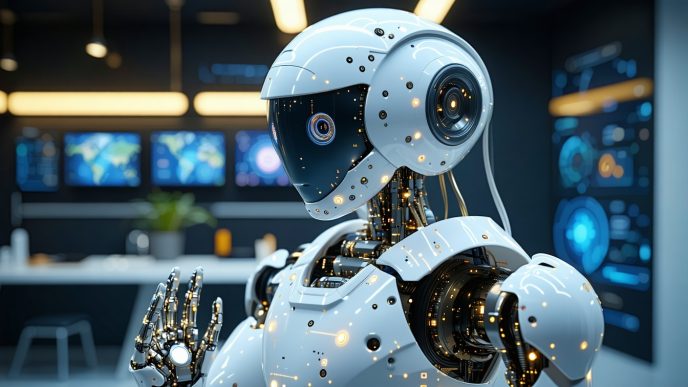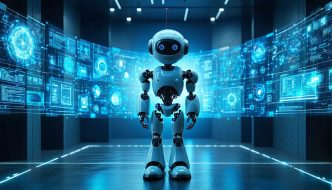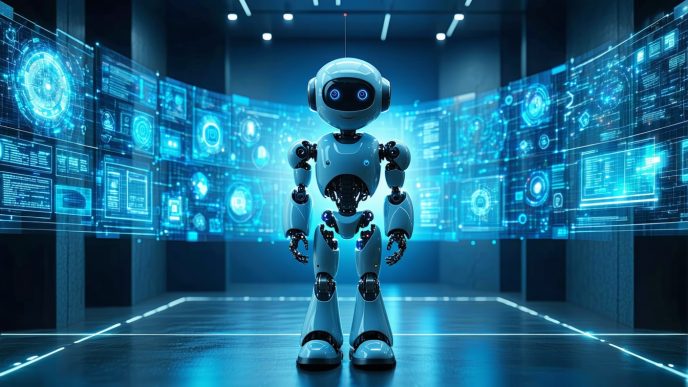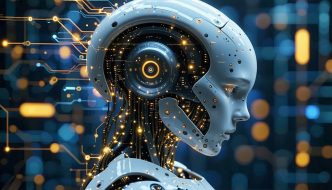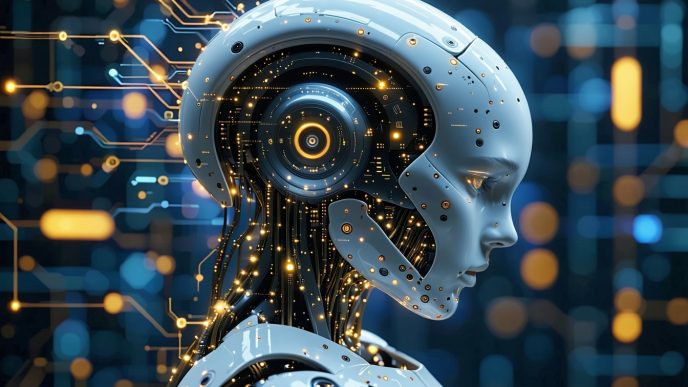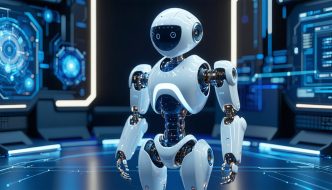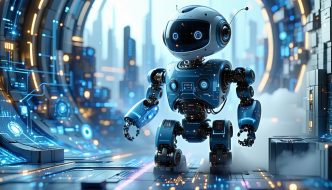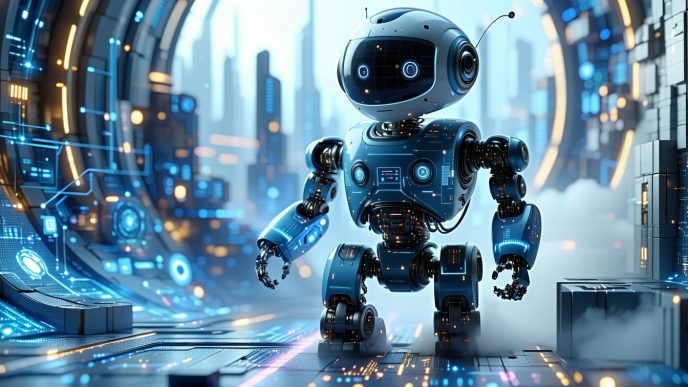Understanding Liability with Home Robots
Introduction to Home Robots
Home robots have become increasingly popular in recent years, providing assistance in various tasks such as cleaning, cooking, and companionship. These advanced machines range from sophisticated humanoid robots, such as the Tesla Optimus robot, to specialized models designed for specific functions. While these robots bring convenience and efficiency to daily life, they also present significant legal considerations regarding liability when malfunctions occur.
Humanoid robots are designed with advanced sensors and artificial intelligence, making them more interactive and capable of performing complex tasks. As the technology continues to advance, the potential for legal issues surrounding their use will likewise grow.
Legal Implications of Robot Malfunctions
When a home robot malfunctions, several legal implications come into play. Liability can arise from various factors, including the robot’s design, its operation, and any interactions it has with users or other parties. Understanding who is responsible for a malfunction can be complicated due to the multiple parties involved in the creation and use of these robots.
Below are common scenarios that can lead to legal disputes:
| Scenario | Potential Liability |
|---|---|
| Malfunction leads to property damage | Manufacturer liability may be assessed if design flaws are proven. |
| Injury due to robot failure | User responsibility could arise from misuse or failure to follow safety guidelines. |
| Third-party modifications | Liability may be shared with the third-party provider if unauthorized changes lead to malfunction. |
As humanoid robots become more integrated into households, the potential for legal challenges will only increase. It is essential for users to be aware of these humanoid robot legal issues in order to mitigate risks associated with their use. Understanding the responsibilities of manufacturers, users, and third parties involved in the creation and maintenance of these robots can help navigate the complex landscape of liability.
Manufacturers Responsibility
Product Liability Laws
Manufacturers of humanoid robots hold significant responsibilities when it comes to ensuring the safety and functionality of their products. Under product liability laws, they may be held accountable for any malfunctions that lead to damage or injury. These laws vary by jurisdiction but typically encompass three main theories:
- Negligence: Manufacturers must design, produce, and market robots that are safe for consumers. If a defect arises from inadequate testing or failure to meet safety standards, the manufacturer may be liable for any resulting harm.
- Strict Liability: This holds manufacturers responsible for defects in their products regardless of fault. If a robot malfunctions and causes damage due to a design flaw or defective component, the manufacturer can be held liable.
- Breach of Warranty: Manufacturers must honor their warranties, which guarantee the performance and safety of their robots. If a robot fails to perform as advertised, users may have grounds for a claim.
| Liability Theory | Description |
|---|---|
| Negligence | Lawsuits based on improper design or safety standards. |
| Strict Liability | Accountability for defective products regardless of fault. |
| Breach of Warranty | Failure to fulfill guarantees regarding performance and safety. |
Understanding these legal implications is crucial for both manufacturers and users of humanoid robots. For a deeper dive into the common types of humanoid robots, explore our article on humanoid robots for home use.
Obligations of Robot Manufacturers
Robot manufacturers carry various obligations regarding their products. These include:
- Safety Testing: Manufacturers are required to conduct thorough safety testing to identify potential risks and ensure that all components operate correctly without malfunction.
- Clear Instructions: Manufacturers must provide users with clear guidelines on how to safely operate, maintain, and troubleshoot robots. This includes information on software updates and features.
- Post-Market Surveillance: After the robots are released to the market, manufacturers should monitor their performance and gather feedback to address any emerging issues.
- Recalls and Repairs: In the event of a significant defect, manufacturers are responsible for issuing recalls or providing repairs. Swift action can mitigate injury and legal repercussions.
The obligations outlined above play a critical role in maintaining user safety. Failure to comply could result in severe legal consequences. For additional insights into the implications of humanoid technologies, visit our article on robot emotions and ethics.
User Responsibility
Understanding user responsibilities is crucial when it comes to operating home robots. Proper usage and maintenance can significantly reduce the risks associated with malfunctions and ensure optimal performance.
Proper Usage Guidelines
Users of humanoid robots must adhere to specific guidelines to ensure safe and effective operation. These guidelines can help in minimizing potential risks and liabilities.
| Usage Aspect | Guidelines |
|---|---|
| User Manual | Always read the user manual before operation. |
| Environment | Ensure the robot operates in a safe environment free from obstacles. |
| Supervision | Supervise the robot during its tasks, particularly in unfamiliar environments. |
| Software Updates | Regularly check for and install software updates to ensure the robot functions optimally. |
| Limitations | Be aware of the robot’s limitations and avoid pushing it beyond its programmed capabilities. |
For more information on humanoid robots for home use, visit our article on humanoid robots for home use.
Maintenance and Care
Proper maintenance and care are vital for ensuring the longevity and effectiveness of humanoid robots. Regular upkeep can prevent malfunctions and enhance operational safety.
| Maintenance Task | Frequency |
|---|---|
| Cleaning | Weekly, to remove dust and debris. |
| Battery Check | Monthly, to ensure optimal performance. |
| Software Diagnostics | Regularly, to catch potential issues early on. |
| Physical Inspections | Bi-annually, to check for wear and tear. |
Users should familiarize themselves with the maintenance requirements specific to their robot model. For more details on humanoid robot maintenance, check out our article on humanoid robot maintenance.
Adhering to these usage guidelines and maintenance schedules can help ensure a positive experience with humanoid robots, while also addressing potential legal implications associated with their operation.
Third-Party Involvement
The integration of third-party services in the realm of home robots introduces additional complexities regarding liability in the event of malfunctions. This section will explore two primary areas of third-party involvement: installation and repair services, and outsourced programming and modifications.
Installation and Repair Services
Many homeowners may opt to hire third-party services for the installation and maintenance of their humanoid robots. These professionals often have the expertise to ensure proper setup. However, this also raises questions about liability if something goes wrong during installation or repairs.
| Service Type | Responsibility | Potential Liability |
|---|---|---|
| Installation | Ensure that the robot is set up correctly | Faults during setup leading to malfunctions may implicate the installer |
| Repair | Conduct necessary repairs on malfunctioning robots | Improper repairs may cause further damage or safety hazards |
If a malfunction occurs post-installation, it could be unclear whether the manufacturer, the homeowner, or the service provider is liable for the consequences. Homeowners should ensure that third-party services are well-versed in safety protocols and best practices, especially when handling sophisticated humanoid robots. More about maintenance can be found in our article on humanoid robot maintenance.
Outsourced Programming and Modifications
Third-party involvement also extends to programming and modifying humanoid robots to meet specific needs. Many owners may wish to enhance their robot’s functionality through custom coding or additional features. While these modifications can be beneficial, they also complicate liability.
Changes made by external programmers can influence how the robot performs and interacts with the environment. If a robot malfunctions due to modifications, determining liability can be challenging, especially if the original manufacturer did not authorize these changes.
| Modification Type | Responsibility | Potential Liability |
|---|---|---|
| Coding Changes | Update the robot’s functionalities | Bugs or failures from the new code may lead to liability concerns |
| Feature Additions | Enhance user experience | If features fail, the modifier may be held responsible |
Understanding the implications of using third-party services for programming and modifications is essential for users. Homeowners must retain clear communication with contractors to ensure that all alterations comply with safety and legal standards. For insights on navigating these humanoid robot legal issues, refer to our article on what owners need to know.
Insurance Coverage
The integration of humanoid robots in daily life raises important questions regarding liability and coverage in case of malfunctions. Understanding insurance options is crucial for owners.
Home Insurance Policies
Most standard home insurance policies include coverage for personal property damage. However, coverage for damages caused by humanoid robots may vary greatly depending on the insurer. Some policies may explicitly cover robotic devices, while others may require additional endorsements or riders.
| Coverage Type | Typical Inclusion | Additional Requirements |
|---|---|---|
| Personal Property | Yes | May need specific robotic device coverage |
| Liability for Damage | Yes | Often requires device registration |
| Accidental Damage | Limited | Riders may be needed specifically for robots |
Homeowners should always review their policy and discuss with their insurance provider to understand how humanoid robots fit into their coverage. For further insights, see our article on what owners need to know.
Additional Robot Malfunction Coverage
Given the unique risks associated with humanoid robots, some insurers offer specialized coverage for robot malfunctions. This type of coverage can protect against accidents caused by device failure, ensuring peace of mind for owners.
| Coverage Type | When It Applies | Cost Considerations |
|---|---|---|
| Malfunction Liability | Accidents caused by robot errors | Varies based on robot type and use |
| Repairs and Replacement | Damage to the robot itself | Average cost varies widely, often requires appraisal |
| Optional Endorsements | Enhanced features | Generally adds to monthly premium |
Owners interested in this additional coverage should assess the risks associated with their specific robot. For detailed discussions on how different designs and functions affect insurance needs, explore our article on humanoid robot design challenges.
Understanding these coverage aspects prepares owners for potential risks and legal issues. Having comprehensive insurance can mitigate financial loss associated with humanoid robot malfunctions.
Precautionary Measures
Safety Precautions for Home Robots
To ensure safe interactions with humanoid robots, it is vital to adhere to specific safety guidelines. These precautions can significantly reduce the risk of malfunctions or accidents involving home robots.
| Safety Precautions | Description |
|---|---|
| Designated Operating Area | Keep the robot within a specific area to avoid obstacles and hazards. |
| Regular Maintenance | Perform routine checks and servicing to ensure optimal operation. |
| User Training | Educate users about the robot’s functions and limitations. |
| Emergency Stop Function | Familiarize users with emergency stop features in case of malfunction. |
| Clear Communication | Use easily understandable commands or interfaces for better interaction. |
By following these guidelines, individuals can help mitigate risks associated with humanoid robot usage. For more insights on maintaining robot safety, explore our article on humanoid robot safety systems.
What to Do in Case of Malfunction or Accident
In the unfortunate event of a malfunction or accident, knowing the proper steps can help ensure safety and potentially address liability concerns.
- Shut Down the Robot: Immediately turn off the robot to prevent further issues or injuries.
- Assess the Situation: Evaluate the extent of any damage or injuries caused by the malfunction.
- Report the Incident: Notify the manufacturer or service provider about the malfunction. Documentation can be crucial for liability cases.
- Consult Insurance Providers: Contact insurance companies to determine coverage for damages. Understanding what policies apply can provide clarity.
- Follow Guidelines for Repairs: Engage licensed professionals for repairs and maintenance, ensuring compliance with safety regulations.
Following these steps not only aids in resolving the situation but also contributes to understanding the wider implications of humanoid robot legal issues. For more information on responsibilities associated with owning a humanoid robot, see our article on what owners need to know.
Case Studies
Real-Life Examples of Robot Malfunctions
Several cases have highlighted the challenges associated with humanoid robots and their malfunctions. These incidents offer insights into the legal implications and responsibilities for manufacturers, users, and service providers.
| Incident | Description | Outcome |
|---|---|---|
| Tesla’s Optimus Robot | During a demonstration, Tesla’s Optimus robot malfunctioned by failing to execute tasks correctly, leading to safety concerns among the audience. | No injuries reported, but the company faced scrutiny regarding safety protocols. Related discussions can be found in our article on tesla optimus robot. |
| Sanctuary AI Phoenix | The Sanctuary AI Phoenix robot accidentally knocked over objects in a home environment due to a programming error, causing property damage. | The homeowner filed a claim for damages; discussions around liability are ongoing. Explore more on the sanctuary ai phoenix. |
| Agility Robotics Digit | The Digit robot experienced a fall while navigating a complex environment, resulting in equipment damage and a delay in tasks. | The manufacturer assessed the malfunction and improved software to prevent future incidents. Further information is available in our article about the agility digit robot. |
Legal Ramifications and Outcomes
The legal ramifications of robot malfunctions can be complex, often depending on the specifics of each case. Here are a few outcomes that illustrate the implications for users and manufacturers.
| Case | Legal Outcome |
|---|---|
| Robotics Unlimited Zeus | A case involving Zeus, who malfunctioned, caused injury to a user. The manufacturer was held liable under product liability laws due to failure in safety standards. |
| Unitree G1 Robot Malfunction | A user sued Unitree after the G1 robot malfunctioned and damaged property. The court ruled in favor of the user, emphasizing the need for proper maintenance and understanding of usage guidelines. For tips, refer to what owners need to know. |
| Ameca Robot by Engineered Arts | In a scenario where Ameca displayed inappropriate behavior due to software glitches, the company faced backlash regarding ethical considerations and liability, leading to intense public discussions about robot emotions and ethics. |
These case studies demonstrate the evolving landscape of humanoid robot legal issues. As technology continues to advance, the legal frameworks will need to adapt to ensure safety and accountability for all stakeholders involved.
